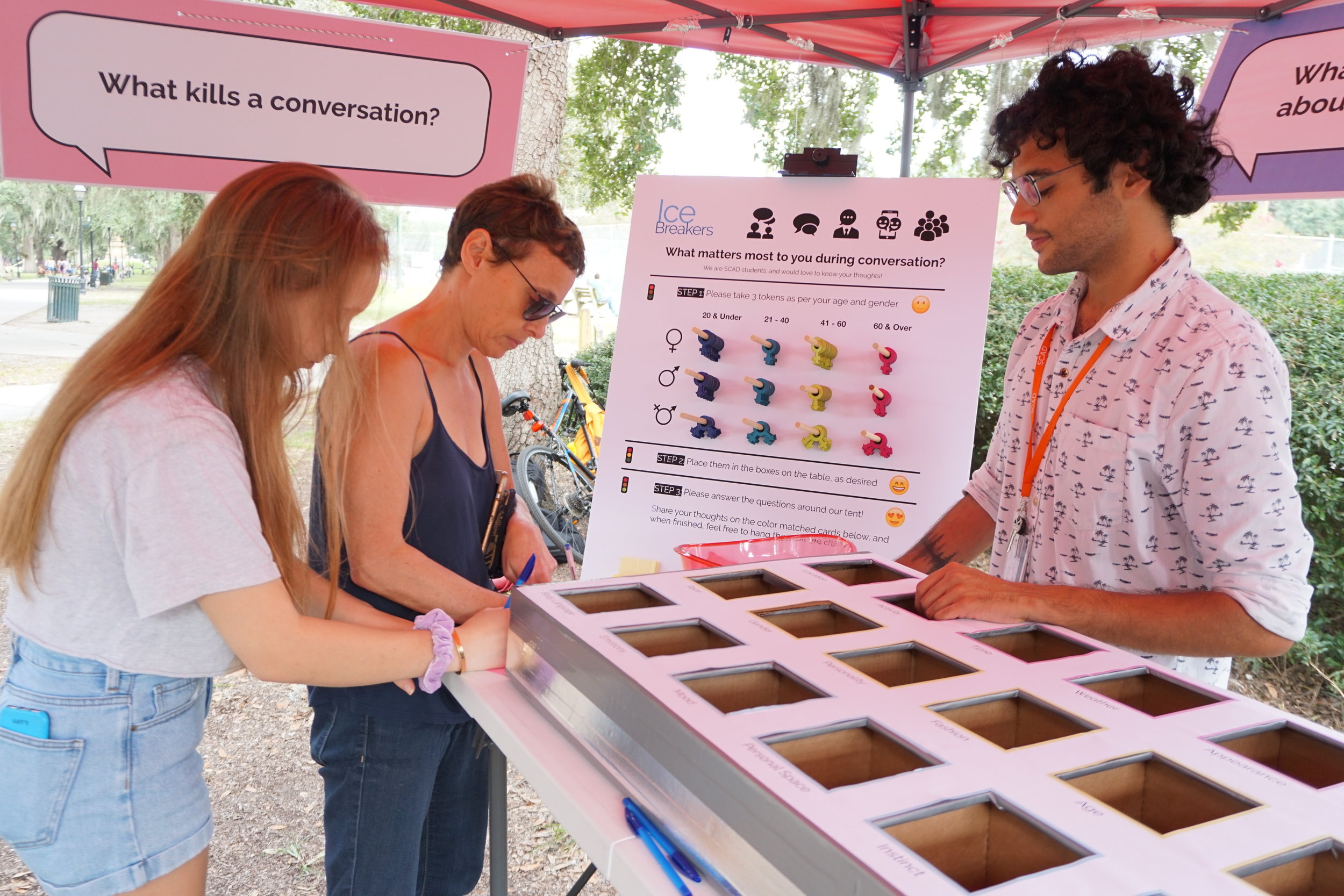Conversations play a fundamental role in interpersonal communication. However, in the ever-changing digital age that we live in, this role is evolving. While the structure, rules and media have been dynamic elements of this social structural bedrock throughout history, change itself has never been so rapid. At the same time, every revolution, be it social, technological, environmental, political or economic, starts with a conversation. ‘IceBreakers’ is an ethnographic inquiry into the nature of conversations and what makes for an ideal experience of conversation.
TEAM
Six strong, driven, supporting personalities came together to conduct this contextual research, seamlessly turning effort into sheer fun.
Left to right: Vidur Hans, Chaitanya Ahuja, Haleema Sadiah, Kshanika Patel, Nitesh Kashyap, Jingbo Li
PROJECT TIMELINE
Through the course of ten weeks, various methods of contextual research were employed to conduct an analysis which, in turn, led to a synthesis informing our design framework. With a unique and surprising flavor of storytelling, the unarticulated needs of users were finally delivered through this framework, in the form of a magazine.
RESEARCH METHODOLOGY
In addition to secondary desk research, our primary research included a diverse mix of qualitative and quantitative methods such as observations, in-depth personal interviews, sensory cues and a cultural probe. Along with these methods, visual tools like stakeholder map and mind map helped us identify factors that influence and impact a conversation. More than anything, these tools really put every member of the team march alongside each other!
Observations were performed at various locations such as different modes of transport, touristic locations, school premises and stores.
This mind map shows us factors that affect or get affected by a conversation.
Stakeholders to a conversation include social, technological and environmental elements in physical and mental proximity of the conversationalist.
An interview template comprising of powerful questions. Using this template, a series of in-depth interviews were conducted.
A Cultural probe proved to be an effective method to muster additional data. Respondents were given two tasks as showcased alongside, providing us with quick quantitative results (from those less patient/busier) and insightful qualitative answers to our 4 key questions (from those intrigued).
There were a total of 146 Respondents
Top 5 factors that affect a conversation:
Personality - 80 Votes
Mood - 64 Votes
Body language - 62 Votes
Instinct - 34 Votes
Emotions - 32 Votes
At a local coffee pub, our sensory cue set-up included a variety of objects and images laid out on a flat table. Respondents were invited and asked, one-by-one, to engage and interact with these objects. Their task was to associate these with one of the following factors that influence conversation, and explain their reasoning:
Personality
Body Language
Empathy
Instinct
Mood & Emotions
These four factors were selected as “anchor” points to help give direction to our research. The anchors were selected on the basis of data collected thus far. This research procreated a myriad of qualitative data hidden in personal anecdotes.
RESEARCH SYNTHESIS: AFFINITIZATION
Each individual data point generated a ‘yellow’ sticky, all 12,000 of which were placed on a wall waiting to be later clustered into groups based on their affinity to that cluster. Guided by our abductive reasoning, four stages of clustering (yellow, blue, pink, green), one after the other, were performed resulting in a hierarchical design framework. Chaotic as the process seemed initially, the resulting framework reassured trust in the plausibility of this synthesis method for the team!
FRAMEWORK
Design research frameworks show the entire research in an engaging manner that is easy to follow and understand. We have shown our research in a model emulating a solar system, as it is well suited to the constantly changing nature of conversation, and the idea of a “universal language”.
Our 17 key insights were arranged as per their importance as factors in conversation, in the following order of desirability: Must Have, Should Have and Nice to Have.
STORYTELLING
The framework had been expanded and discussed in detail in our IceBreakers Magazine, with each part of the framework referring to pieces of our participants’ stories.
These stories had been organised as per the following four focus areas:
The Approach: Starting conversations, impediments, motivations and influences.
Context & Content: Circumstance, environment and relationships with participants, and how they all intermingle to shape conversation.
Turn-Offs & Deal Breakers: Pain points in conversations and conversation ending scenarios.
Recall: The feelings and thoughts of participants felt after conversation, in reflection.































